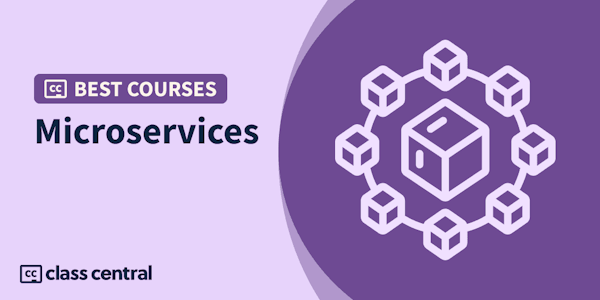Overview
Class Central Tips
Start your cloud computing journey with this self-paced introductory course! Whether you need general cloud computing knowledge for school or business, or you are considering a career change, this beginner-friendly course is right for you.
In this course you’ll learn about essential characteristics of cloud computing and emerging technologies supported by cloud. You’ll explore cloud service models, including Infrastructure as a Service (IaaS), Platform as a Service (PaaS), Software as a Service (SaaS), and Public, Private, and Hybrid deployment models.
Discover the offerings of prominent cloud service providers AWS, Google, IBM, Microsoft, and others, and review cloud computing case studies. Learn about cloud adoption, blockchain, analytics, and AI.
You will learn about the many components of cloud computing architecture including datacenters, availability zones, virtual machines, containers, and bare metal servers. You will also familiarize yourself with different types of cloud storage options, such as Object Storage.
You’ll gain foundational knowledge of emergent cloud trends and practices including Hybrid, Multicloud, Microservices, Serverless, DevOps, Cloud Native, Application Modernization, as well as learn about cloud security and monitoring. You’ll also explore cloud computing job roles and possible career paths and opportunities.
You will complete a number of labs and quizzes throughout this course to increase your understanding of course content. At the end of the course, you will complete a final project where you will deploy an application to Cloud using a serverless architecture, a valuable addition to your portfolio.
After this course, check out the related courses to help you towards your new career as a cloud engineer, full stack developer, DevOps engineer, cybersecurity analyst, and others.
Syllabus
- Overview of Cloud Computing
- In Module 1, in the first lesson, you will learn the definition of cloud computing and its five essential characteristics. In the next topic, you will learn about the history and evolution of cloud computing and the benefits of the pay-as-you-go feature of cloud computing. The third topic will describe the key considerations, benefits, and challenges of cloud computing. You will next discuss some common cloud service providers. In the second lesson, you will learn the need for cloud adoption by businesses. You will then discuss some case studies of businesses that benefitted from cloud adoption. In the third lesson, you will learn about emerging technologies like IoT, AI, Blockchain, and so on that leverage cloud’s scalability and processing power to provide value to individuals and businesses alike, supported by some case studies.
- Cloud Computing Models
- In Module 2, you will learn about the different types of service and deployment models of cloud computing. The first lesson covers the three main service models available on the cloud—Infrastructure-as-a-Service (IaaS), Platform-as-a-Service (PaaS), and Software-as-a-Service (SaaS). You will learn the differences between each model, the advantages of each, and the key components of cloud infrastructure. The second lesson goes over the four main deployment models available on the cloud—public, private, hybrid, and community. You will learn what deployment models are and the differences and advantages of each model. At the end of the module, you will create an account on IBM Cloud.
- Components of Cloud Computing
- In Module 3, you will learn about the various components of a cloud computing architecture, such as the virtualization of virtual machines and bare metal servers, and the difference between virtual machines and bare metal servers. You will learn the different types of virtual machines, how to build a secure cloud networking presence, how container-based technologies work, and the benefits of a Content Delivery Network. In the second lesson, we will also familiarize you with the four main types of cloud storage—Direct Attached, File, Block, and Object Storage. You will learn the differences in how they can be accessed, the capacity they offer, how much they cost, the types of data they are best suited to store, and their read-write speed.
- Emergent Trends and Practices
- In Module 4, you will learn about the use cases and challenges of emergent trends in cloud computing, such as hybrid multi-cloud, serverless computing, and microservices. Additionally, this module will teach you about the core concepts and benefits of cloud native applications, the role of DevOps in addressing some of the complexities of cloud computing, and how organizations can benefit from modernizing their applications.
- Cloud Security, Monitoring, Case Studies, Jobs
- In Module 5, you will learn about elements of cloud security, including Identity and Access Management and cloud encryption. This module will cover how organizations leverage cloud monitoring solutions to optimize business benefits. It will familiarize you with cloud adoption case studies in different industry verticals, and the various career opportunities and job roles available in the field of cloud computing today.
- Final Project and Assignment
- In this module, you will complete a final project to deploy a containerized application on the cloud using a serverless technology (no programming experience needed). You can also demonstrate your knowledge of cloud computing by completing an optional assessment based on a cloud architecture design case study.
Taught by
Rav Ahuja
Tags
Reviews
4.0 rating, based on 1 Class Central review
4.6 rating at Coursera based on 5539 ratings
Showing Class Central Sort
-
Very happy to take this course. Gives a broad overview of where computing is today, rather than focus on any one, particular language or technology.




